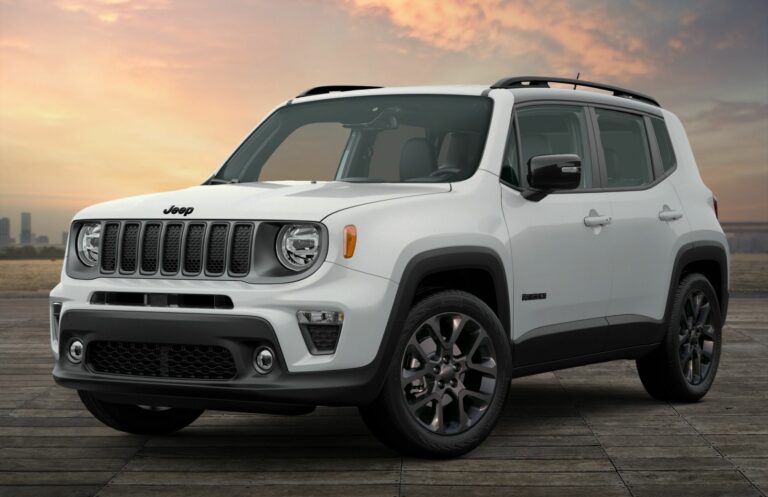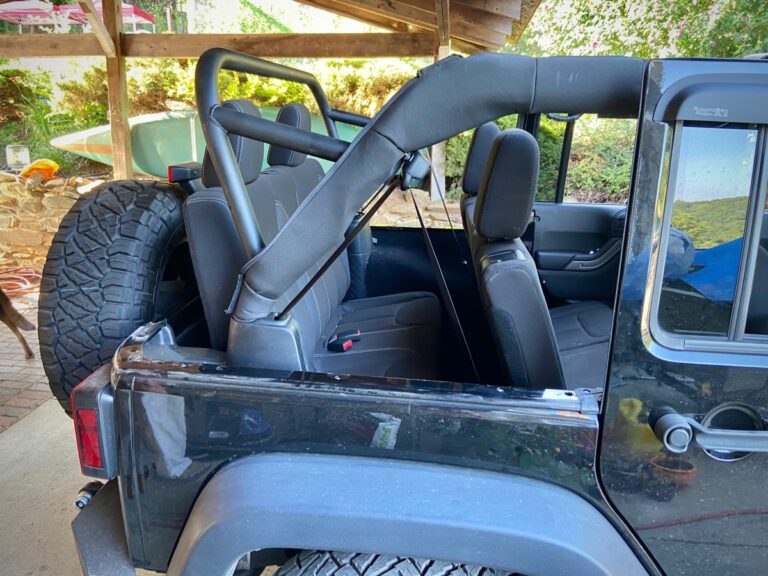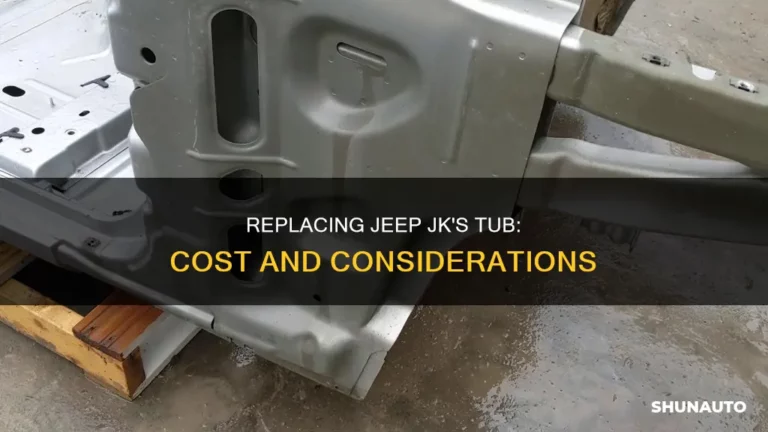2000 Jeep Cherokee Transmission: The Heart of a Legend
2000 Jeep Cherokee Transmission: The Heart of a Legend jeeps.truckstrend.com
The 2000 Jeep Cherokee (XJ) stands as an icon in automotive history, revered for its rugged simplicity, off-road prowess, and timeless design. At the core of its legendary durability, particularly for the vast majority of automatics, lies its transmission. For the 2000 model year equipped with the 4.0L inline-six engine, the primary automatic transmission found is the Aisin-Warner AW4. This unit, a four-speed automatic, is often lauded by enthusiasts and mechanics alike for its robustness and relative simplicity, contributing significantly to the XJ’s reputation for longevity.
Understanding the nuances of the 2000 Jeep Cherokee’s transmission is crucial for any owner, whether you’re a seasoned Jeeper or a new enthusiast. This comprehensive guide will delve into the specifics of the AW4, exploring its characteristics, common issues, essential maintenance, troubleshooting tips, and the considerations involved in its repair or replacement, ensuring your classic XJ continues to conquer roads and trails for years to come.
2000 Jeep Cherokee Transmission: The Heart of a Legend
Understanding the AW4: A Pillar of Reliability
The Aisin-Warner AW4 automatic transmission is a Japanese-built unit, renowned for its strong, durable design. Unlike many more complex, electronically-governed transmissions of its era (or later), the AW4 employs a largely hydraulic control system with electronic solenoids for shift control and torque converter lock-up. This blend of mechanical robustness and limited electronic intervention makes it remarkably resilient and less prone to the intricate failures often seen in more modern units.
Key Characteristics of the AW4:
- Four-Speed Automatic: Provides a good balance of acceleration and highway cruising efficiency.
- Hydraulic Control: Shifts are primarily governed by fluid pressure, making it less reliant on complex sensors and computer modules for basic operation.
- Electronic Solenoids: While hydraulically controlled, it uses three solenoids (two shift solenoids, one lock-up solenoid) to manage gear changes and torque converter clutch engagement.
- Detachable Bell Housing: Allows for easier engine and transmission separation, though still a significant job.
- Simplicity and Durability: Its straightforward design contributes to its long lifespan and ease of repair compared to more complex transmissions.

While the AW4 is the standard automatic for the 4.0L XJ, it’s worth noting that some earlier XJs (pre-1991) used different automatics, and a small percentage came with manual transmissions (AX-15 or NV3550). However, for the 2000 model year, if it’s an automatic 4.0L, it’s almost certainly an AW4.
Why the AW4 is Praised (and What to Watch For)
The AW4’s reputation as a "bulletproof" transmission is well-earned. Its internal components are generally overbuilt, capable of handling significant abuse, especially in off-road conditions where sudden torque loads are common. This makes it a favorite among off-road enthusiasts who demand reliability.

Benefits of the AW4:
- Exceptional Longevity: Many AW4s last well over 200,000 to 300,000 miles with proper maintenance.
- Strong for Off-Roading: Handles high-stress situations well due to its robust design.
- Relatively Simple to Troubleshoot: Fewer complex electronic components mean diagnostics are often more straightforward.
- Widely Available Parts: Due to its commonality and longevity, parts for repair and rebuilds are readily available.
- Adaptable: Can be built up for higher performance applications if desired.

However, even the most reliable components have their quirks and potential issues. Recognizing these early can save significant time and money.
Common Transmission Issues and Symptoms:
- Delayed or Harsh Shifts:
- Symptoms: A noticeable pause when shifting from Park to Drive or Reverse, or a hard "clunk" when shifting between gears (especially 1-2 or 2-3).
- Causes: Low or dirty transmission fluid, failing shift solenoids, worn out Neutral Safety Switch (NSS), or a misadjusted Throttle Position Sensor (TPS).
- Slipping Gears:
- Symptoms: Engine RPMs rise but the vehicle doesn’t accelerate proportionally, or the transmission feels like it’s "missing" a gear.
- Causes: Critically low fluid, severely worn clutch packs, or a malfunctioning torque converter.
- Overheating:
- Symptoms: Transmission temperature light illuminates, burning smell, or sluggish performance.
- Causes: Low fluid, heavy towing/off-roading without adequate cooling, clogged transmission cooler lines, or a failing torque converter.
- Fluid Leaks:
- Symptoms: Reddish fluid puddles under the vehicle.
- Causes: Worn pan gasket, damaged cooler lines, front or rear seals, or output shaft seals.
- Noises:
- Symptoms: Whining, grinding, or clunking sounds coming from the transmission area.
- Causes: Low fluid, worn internal bearings, damaged planetary gears, or issues with the torque converter.
- No Movement/Limp Mode:
- Symptoms: Vehicle won’t move in any gear, or only moves in a single gear (often 3rd).
- Causes: Major internal failure, complete loss of fluid, or a critical electrical fault (e.g., failed TCM or sensor).
Essential Maintenance for AW4 Longevity
Proactive maintenance is the single most important factor in extending the life of your 2000 Jeep Cherokee’s transmission. The AW4, while tough, still relies on clean fluid and proper cooling to function optimally.
- Fluid Checks and Changes:
- Fluid Type: The AW4 specifically requires DEXRON III/MERCON automatic transmission fluid. Using the wrong fluid can lead to serious damage.
- Checking Level: Check the fluid with the engine warm and running, in Park, on a level surface. The dipstick will have "HOT" and "COLD" marks.
- Change Interval: While some sources suggest "lifetime" fluid, this is a myth. For the AW4, a drain and fill every 30,000 miles (or every 15,000 miles for heavy use/towing) is highly recommended. A full fluid flush is generally discouraged unless performed by a very reputable shop using a low-pressure machine, as it can dislodge debris and clog internal passages. A series of drain-and-fills over a few driving cycles is a safer alternative to replace most of the fluid.
- Filter Replacement:
- The AW4 uses an internal filter that should be replaced every 30,000 to 60,000 miles, or whenever the fluid is changed. This typically involves dropping the transmission pan.
- Cooling System:
- The AW4 relies on the engine’s cooling system via a heat exchanger in the radiator. For vehicles used for towing, off-roading, or in hot climates, installing an external transmission cooler is highly recommended. This significantly reduces fluid temperature, which is critical for preventing premature wear.
- Neutral Safety Switch (NSS) Maintenance:
- The NSS is located on the driver’s side of the transmission and can become clogged with dirt and debris, leading to starting issues (won’t start in Park or Neutral), or intermittent reverse lights. It can often be cleaned and greased rather than replaced.
- Throttle Position Sensor (TPS) Check:
- While not strictly a transmission part, a faulty TPS can send incorrect signals to the transmission control module (TCM), leading to erratic shifting. Ensure it’s clean and calibrated correctly.
Troubleshooting Common AW4 Problems
Before jumping to costly repairs, a systematic approach to troubleshooting can often identify simple solutions.
- Check Fluid First: Always the first step. Low or burnt fluid is a common culprit for many symptoms.
- Inspect for Leaks: Trace any fluid drips to their source. Pan gasket, cooler lines, or seals are common.
- Test the NSS: If your Jeep won’t start in Park or Neutral, or your reverse lights are intermittent, the NSS is a prime suspect. Wiggle the shifter while trying to start; if it starts, the NSS is likely faulty.
- Inspect Wiring and Connectors: Loose or corroded electrical connections to the solenoids, TPS, or NSS can cause erratic behavior.
- Listen to the Sounds: A whine often indicates low fluid or pump issues. A clunk can be a U-joint or internal wear.
- Consult OBD-II Codes: While the AW4 is less electronic, other related systems (engine sensors, TCM) can throw codes that might indirectly affect transmission performance.
Repair vs. Replacement: Making the Right Choice
When faced with a significant transmission issue, deciding between repair, rebuilding, or replacing the unit is a critical decision.
- Repair: If the issue is minor (e.g., a single faulty solenoid, a leak, or a sensor), a targeted repair is often the most cost-effective solution.
- Rebuild: A full rebuild involves disassembling the transmission, replacing all worn components (clutches, bands, seals, bearings, solenoids), and often upgrading some parts. This is a good option if the transmission has high mileage and multiple internal issues, and you plan to keep the vehicle long-term. A quality rebuild can often exceed the life of a new unit.
- Replacement:
- Used/Salvage: The cheapest option, but comes with significant risk. You don’t know the history or internal condition of the used unit. A warranty (if any) is typically very limited.
- Remanufactured: A remanufactured transmission is one that has been rebuilt to factory specifications by a specialized company, often with upgrades to common failure points. These usually come with a good warranty and are a strong balance of cost and reliability.
- New: Extremely rare and cost-prohibitive for an AW4, as production largely ceased years ago.
Factors to Consider:
- Cost: Compare the quotes for each option, including parts and labor.
- Extent of Damage: A minor issue vs. catastrophic failure.
- Vehicle Value: How much are you willing to invest in an older vehicle?
- DIY Capability: Replacing or rebuilding a transmission is a major undertaking, usually requiring specialized tools and significant mechanical skill.
- Warranty: A good warranty provides peace of mind.
For most 2000 Jeep Cherokee owners, a quality rebuild or a reliable remanufactured AW4 offers the best value and longevity, ensuring your XJ remains a dependable workhorse.
Practical Tips for 2000 Jeep Cherokee Owners
- Don’t Ignore Early Symptoms: A small shudder or delayed shift can escalate into a major problem if neglected.
- Use Quality Fluids and Parts: Skimping on maintenance items can lead to premature failure.
- Avoid Overloading/Overheating: Respect the vehicle’s limits, especially when towing or off-roading. Install an auxiliary cooler if regularly pushing limits.
- Regular Visual Inspections: Periodically check under the vehicle for leaks or unusual signs.
- Find a Reputable Mechanic: If you’re not comfortable doing the work yourself, seek out a transmission specialist or a mechanic familiar with Jeeps and older vehicles.
Price Table: 2000 Jeep Cherokee AW4 Transmission Components & Services (Estimates)
| Item/Service | Estimated Cost Range (USD) | Notes |
|---|---|---|
| Fluids & Filters | ||
| DEXRON III/MERCON ATF (per quart) | $5 – $10 | Typically needs 4-5 quarts for a drain & fill, ~10-12 for full system. |
| Transmission Filter Kit | $20 – $50 | Includes filter and pan gasket. |
| Common Replacement Parts | ||
| Neutral Safety Switch (NSS) | $60 – $150 | Aftermarket vs. OEM. |
| Throttle Position Sensor (TPS) | $30 – $80 | Aftermarket vs. OEM. |
| Shift Solenoids (each) | $40 – $100 | AW4 has two shift solenoids and one lock-up solenoid. |
| Torque Converter Lock-Up Solenoid | $50 – $120 | |
| Transmission Pan Gasket | $10 – $25 | Often included in filter kit. |
| Auxiliary Transmission Cooler | $50 – $200 | Highly recommended for heavy use. |
| Transmission Units | ||
| Used/Salvage AW4 Transmission | $300 – $800 | Price highly variable based on mileage, condition, and seller. |
| Rebuilt/Remanufactured AW4 Transmission | $1,200 – $2,500 | Often comes with a warranty (1-3 years). Core charge usually applies. |
| Labor Costs (Estimates) | (Does not include parts cost) | |
| Fluid & Filter Change | $80 – $150 | Varies by shop rates. |
| NSS Replacement | $100 – $250 | Access can be tricky. |
| Solenoid Replacement | $200 – $400 | Requires dropping the pan. |
| Transmission Removal & Installation | $500 – $1,000 | For swapping a unit. |
| Transmission Rebuild Labor | $800 – $1,500+ | For internal rebuild by a specialist shop. |
Note: Prices are estimates and can vary significantly based on geographic location, parts supplier, brand (OEM vs. aftermarket), and mechanic’s labor rates. Always get multiple quotes.
Frequently Asked Questions (FAQ) about the 2000 Jeep Cherokee Transmission
Q: What type of automatic transmission does the 2000 Jeep Cherokee 4.0L have?
A: It primarily uses the Aisin-Warner AW4 (4-speed automatic) transmission.
Q: How often should I change the transmission fluid in my AW4?
A: For normal driving, a drain and fill every 30,000 miles is recommended. For heavy use (towing, off-roading), consider changing it every 15,000-20,000 miles.
Q: What type of fluid should I use for my AW4?
A: DEXRON III/MERCON automatic transmission fluid. Do NOT use ATF+4 or other Chrysler-specific fluids, as they are not compatible with the AW4.
Q: What are common symptoms of a failing AW4 transmission?
A: Delayed or harsh shifts, slipping gears, overheating, fluid leaks, whining or grinding noises, or the vehicle not moving in certain gears.
Q: Can I replace the transmission myself?
A: Replacing an AW4 is a significant mechanical task that requires specialized tools (transmission jack, appropriate sockets, torque wrench) and a good understanding of automotive mechanics. It’s generally recommended for experienced DIYers.
Q: Is the AW4 a reliable transmission?
A: Yes, the AW4 is widely regarded as one of the most reliable automatic transmissions ever put into a Jeep Cherokee. With proper maintenance, it can last for hundreds of thousands of miles.
Q: What is the Neutral Safety Switch (NSS) and why is it important?
A: The NSS is a sensor on the side of the transmission that tells the vehicle’s computer whether the transmission is in Park or Neutral. It prevents the engine from starting in gear and also controls the reverse lights. A faulty NSS can cause no-start conditions, especially in Park or Neutral, or intermittent reverse lights. It’s often fixable by cleaning.
Q: Should I flush my AW4 transmission fluid?
A: It’s generally advised against a full pressure flush for the AW4, especially if the fluid is very old or dirty. A series of drain-and-fills (draining the pan, refilling, driving, and repeating several times) is a safer way to replace most of the fluid without risking dislodging debris.
Conclusion
The 2000 Jeep Cherokee’s AW4 transmission is a testament to robust engineering, playing a pivotal role in the XJ’s enduring legacy. Its blend of mechanical simplicity and rugged durability has made it a favorite among enthusiasts. While no mechanical component is entirely immune to wear and tear, understanding the AW4’s characteristics, adhering to a strict maintenance schedule, and promptly addressing any emerging symptoms can ensure your beloved XJ continues to deliver reliable performance for countless adventures. With proper care, the transmission in your 2000 Jeep Cherokee is more than just a component; it’s a promise of continued reliability, keeping the spirit of this legendary vehicle alive and thriving.




